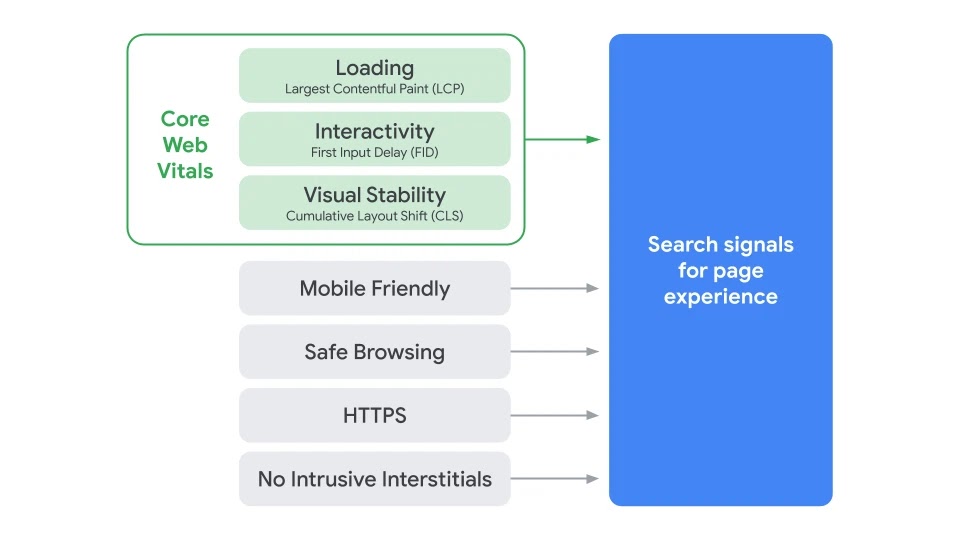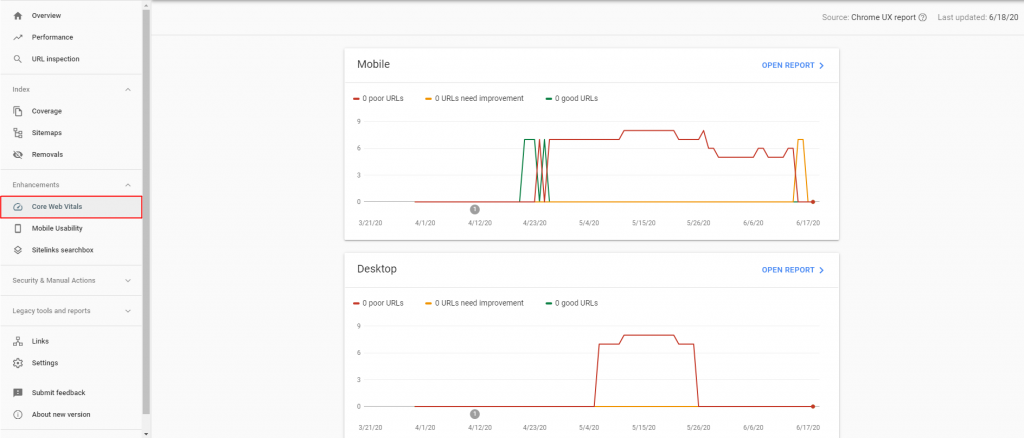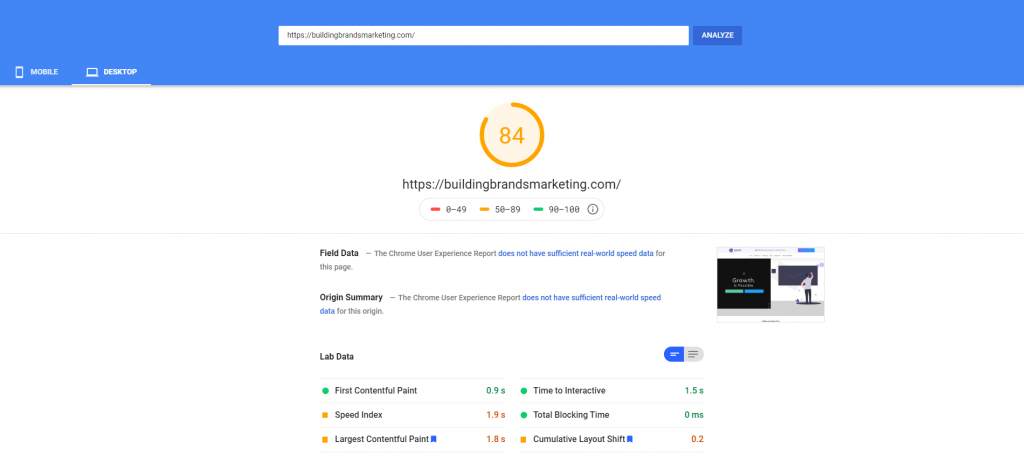On May 28, 2020, Google announced its plans for an algorithm update called Page Experience. This update, which will go live in 2021, is part of Google’s ongoing efforts to better understand how users interact with web pages and to deliver higher-quality results.
The Page Experience algorithm will assess user experience based on page interaction. This will involve a combination of new and existing ranking signals. Google’s goal is to put more weight on how easy and enjoyable a page is to interact with instead of focusing only on page content. The team at Google recognizes that most users don’t want to visit sites that are slow, confusing to navigate, or full of pop-up ads no matter how great the information on the page is.
There’s still a lot we don’t know about the Page Experience update. However, it appears to be a major change to the algorithm that has the potential to impact a large portion of search rankings. To maintain or boost your site’s ranking, you should understand how Google plans to measure page experience and what you can do to improve your site’s performance.
Page Experience Ranking Factors
According to Google, page experience itself is not considered a ranking factor, but the elements that contribute to the overall user experience are. The purpose of the update is to encourage sites to refine their Core Web Vitals, which are metrics that attempt to objectively measure user experience. After the Page Experience update, the algorithm will place more emphasis on these metrics.
The concept of Core Web Vitals was first introduced in the beginning of May, just a few weeks before the Page Experience announcement. It includes the following three metrics:

Largest Contentful Paint (LCP): This is a loading time metric that measures how long it takes for the largest content element on the page to become visible. Google considers a good LCP to be 2.5 seconds or less and a poor LCP to be longer than four seconds.
First Input Delay (FID): This is an interactivity metric. It measures the time between the user’s first interaction with the page and the browser’s actual response to that interaction. Less than 100 milliseconds is considered good, and more than 300 milliseconds is considered poor.
Cumulative Layout Shift (CLS): This is a visual stability metric that adds up every unexpected shift in the layout. For example, it measures when a picture loads slowly and then bumps the text down when it finally finishes loading. It also measures when the page loads as you try to click, so you click the wrong option. CLS is calculated by multiplying the size of the page element by the distance it moves the content. Less than 0.1 is good, and more than 0.25 is poor.
Other user experience factors that will affect your search ranking include the following:
- Mobile-friendly design: Google crawls the mobile versions of each page, so highly-ranking sites have a complete and easy-to-navigate mobile design.
- Safe browsing: Sites that include malicious or deceptive content or software will rank poorly. Since 2016, Google has penalized repeat offenders who have unsafe elements on their pages.
- HTTPS: This is a safer version of HTTP that creates a secure connection between the server and the browser. HTTPS is especially important for online businesses that process customer transactions through their website.
- No intrusive interstitials: It should be easy for users to access the website content. There shouldn’t be any popups that users have to dismiss before they can view the information on the page.

How Big of an Impact Will This Have?
Experts don’t yet know how much this will change search rankings. Some Google updates only slightly affect rankings, and others change a large percentage of search queries. The new ranking factors that make up the Core Web Vitals could have a big impact on sites that don’t provide a good user experience.
However, Google leaders have confirmed that high-quality content will still be the top priority. Sites with a poor page experience can rank well if they have great content, and pages with an excellent user experience can rank poorly if their content is lacking.
Google’s announcement mentioned that the Page Experience update will play a big role in the Top Stories selection, which are the card-style news results that appear at the top of some search results pages. Google’s team also said that they are removing the AMP requirement for Top Stories eligibility, so pages with and without AMP will now be competing with each other to appear in Top Stories.
When Will the Update Go Live?
We don’t know exactly when in 2021 the Page Experience update will go live. Google says it will give six months of notice before implementing the algorithm change. In the past, Google has sometimes only given a few hours of notice before an algorithm update, so the six months of notice is a relief.
Google doesn’t usually announce an update so far in advance. The Page Experience announcement states that they’re giving it plenty of time because they understand that website owners are focusing their efforts on the effects of COVID-19. They stress that there is no need to take action right now. However, it may be wise for business owners to take advantage of this advanced warning and use the extra time to update and improve their website.
How to Prepare for the Update
Here are three steps you can take to start optimizing your site for the Page Experience update:
1. View your Core Web Vitals report.
Before you make any changes to your site, you should find out how your site is currently performing and see what needs your attention. The Core Web Vitals report is a new update in the Google Search Console that measures your site’s LCD, FID, and CLS. It replaced the speed report, but the information it provides is similar.
The report shows your metrics for both mobile and desktop users. It tells you how many of your site’s URLs are performing well and how many need improvement. You can use this report to prioritize the issues on your site that affect user experience.
View your Core Web Vitals Report.

2. Optimize your page speed.
Page loading speed is one of the most common user experience issues. Fortunately, there are a variety of strategies you can use to optimize your page speed.
Images can drastically slow down your page, but you can improve image loading speed by using the correct format. JPEGs work better for photographs, and PNGs work better for graphics. For frequently-used images like icons, use a CSS sprite, which will combine multiple images into one to decrease loading time.
You can also enable file compression with Gzip, which will reduce file sizes that are larger than 150 bytes. Minimizing the number of redirects will speed up your site as well.
Test your website’s speed with Google’s PageInsights tool.

3. Use responsive web design.
Because mobile browsing is becoming more common than desktop use, Google has been prioritizing mobile sites for a while. A responsive web design adjusts the layout of your site to match the user’s screen size. This enables both mobile and desktop browsing and ensures that all of your content is the same on your mobile site.
Google offers a Mobile-Friendly Test that will tell you if your current website is responsive. If your mobile site is incomplete, slow, or difficult to navigate, you should update it as soon as possible.
Check for issues with Google’s Mobile-Friendly Test.

Conclusion
The fields of web design and search engine optimization are constantly evolving. For your site to rank well, it’s important to stay up-to-date on the latest updates to the Google algorithm. Although there are many unanswered questions about the Page Experience update, it looks like it could have a significant impact on search rankings. To keep up with your competitors, start looking into ways to improve your site’s user experience.
Building Brands Marketing is a full-service marketing consulting firm located in Victoria, TX serving businesses from Victoria to Katy, and the entire Gulf Coast region in between. Our process is designed to empower your brand and outfit your business with the marketing tools needed for you to succeed. We work with you to understand your business objectives and we offer strategies that will achieve your marketing objectives. Our team of SEO experts hold a variety of certifications in Google and Bing. To discuss a local SEO strategy for your business, schedule a free consultation with a member of our team today.





